The 1960s was an incredibly important time in aviation development.
Following on from the early days of jet airliners in the 1950s, the 60s saw a wave of development on this new means of air travel.
Types like the Boeing 707 and DC-8, which had debuted in the 50s, suddenly became of great importance, while major milestones in aviation would appear before the end of the decade in the form of Concorde and the Jumbo Jet. Here is our list of classic 1960s airliners.
Hawker Siddeley 748 – 1960
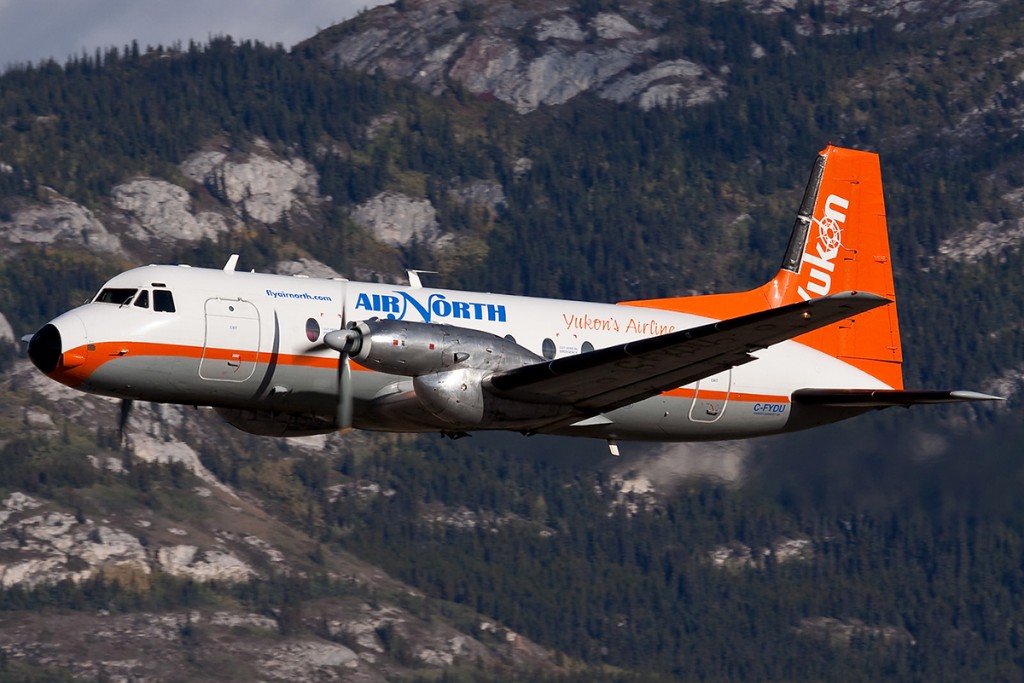
One of many designs aimed at replacing the Douglas DC-3, the Hawker Siddeley 748 was initially planned to be a 20-30 seater, but following feedback from potential customers this was increased to 40. The rugged design would be able to operate from smaller, less prepared airfields. In addition, it was designed to be easy to repair and required little in the way of ground equipment. The design proved very popular with airlines around the world and orders were soon being placed.
Boeing 720 – 1960
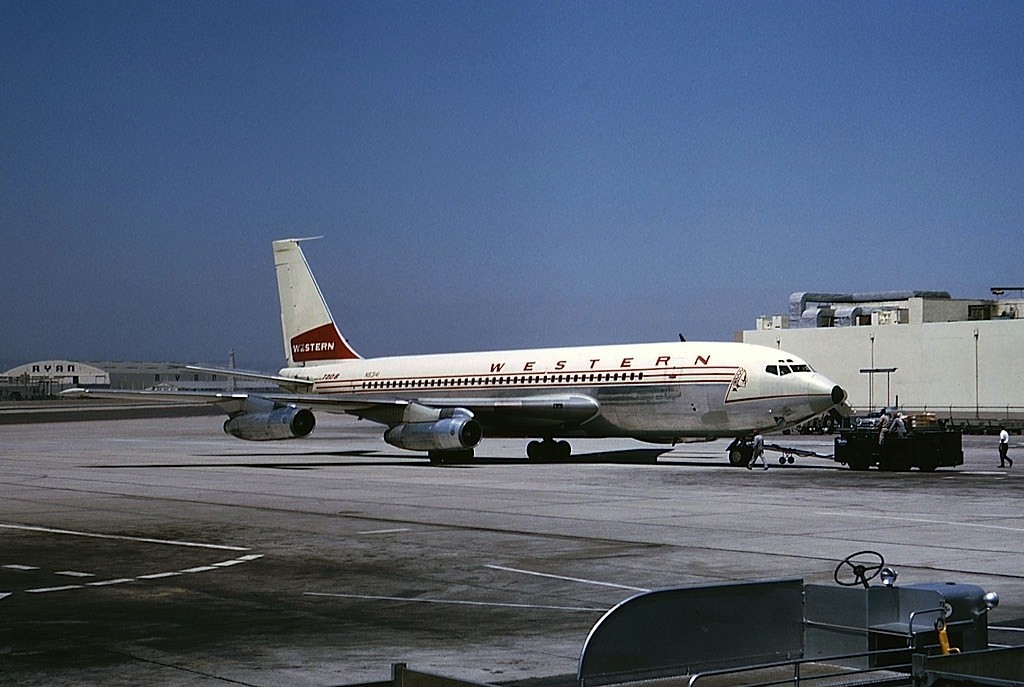
A lower-cost, shorter variant of the Boeing 707, the 720 first flew on 23 November, 1959 with launch customer United putting the aircraft into service in July 1960.
Braniff, Aer Lingus and Eastern were some of the other airlines to follow suit. A turbofan version, the 720B, was also produced, making its first flight on 6 October, 1960 with American being the launch customer. Many early model 720s were converted to the 720B standard.
Vickers 951 Vanguard – 1960
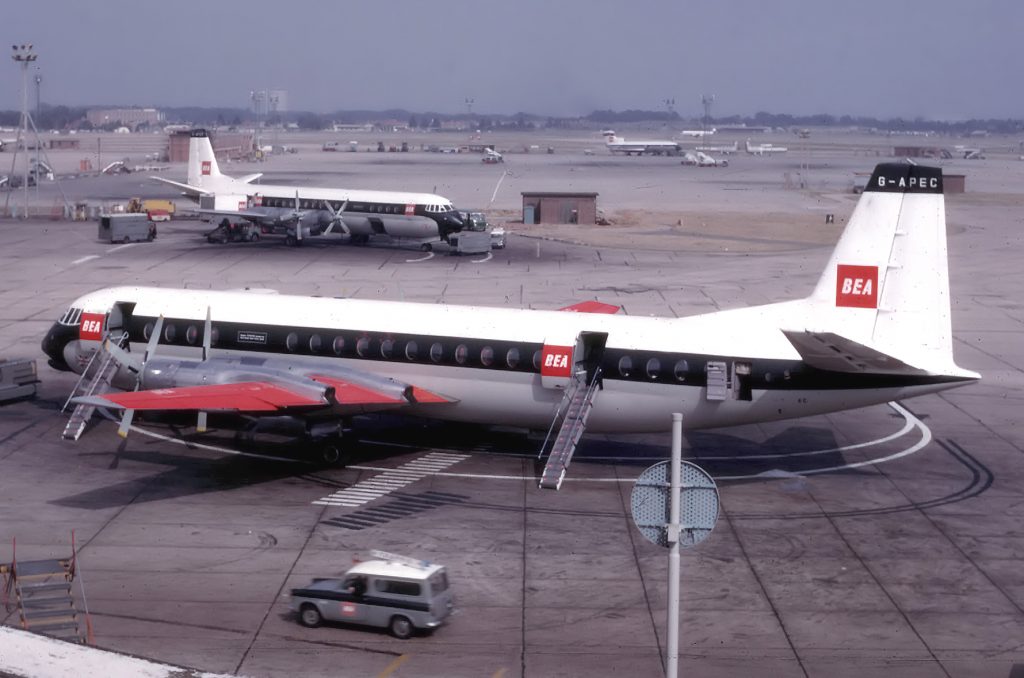
Originally envisaged to be a next generation of turboprop airliner for British European Airlines (BEA), the Vanguard came a little late as it was bypassed with the arrival of pure jets and never got anywhere near the number of orders of its predecessor, the Viscount.
The design changed somewhat over the process from initial concept but ended up with seating for 126, using a double-bubble fuselage cross section and thereby creating plenty of belly hold space. The V.953 version could carry up to 139 passengers.
Many Vanguards were later turned into ‘Merchantman’ freighters for the final years of their life.
Convair 990 Coronado – 1961
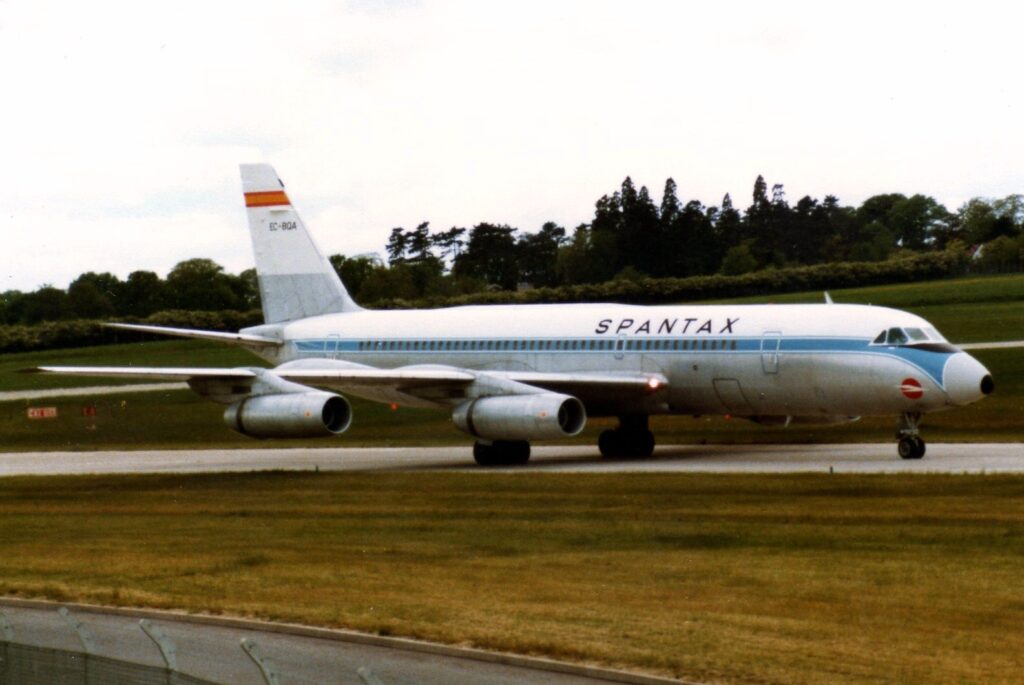
Spantax Convair 990. Photo (c) Simon Butler
The CV990 was designed as an upgrade to the slow-selling CV880 and also to meet the needs of American Airlines, who required a transcontinental aircraft.
Delays in production led to the Boeing 720 and 727 attracting more airlines, and only 37 Coronados were built.
The 990 does, however, still have a lasting legacy as it is still the fastest subsonic airliner ever built, flying at 990kmph, a speed that in part created the aircraft’s designation.
Aviation Traders ATL.98 Carvair – 1961
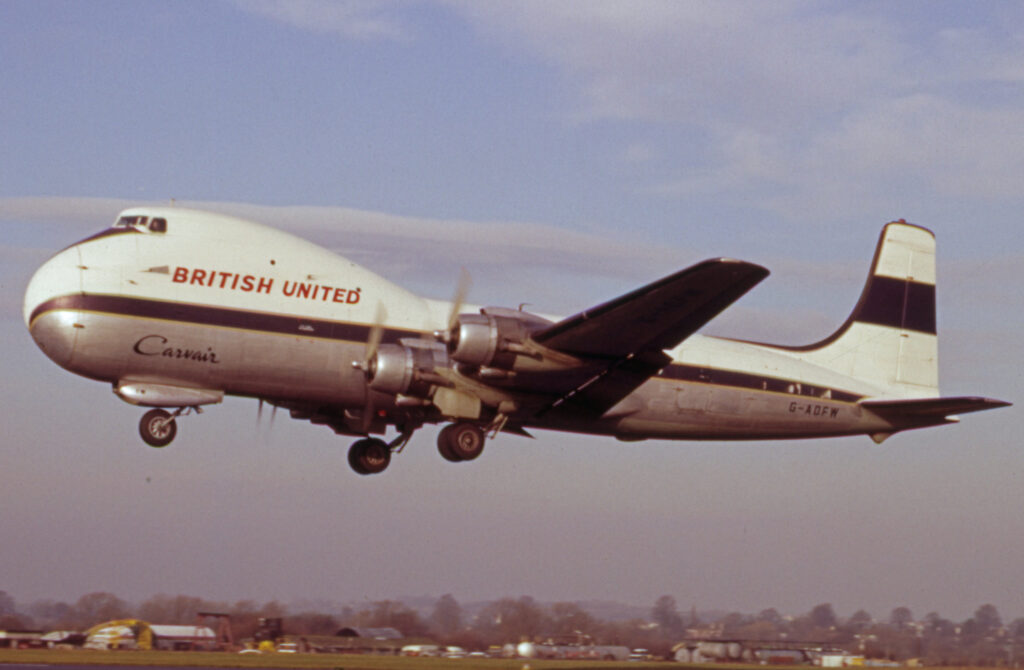
Photo (c) Richard John Goring (Transportraits)
Freddie Laker’s Channel Air Bridge transported cars and passengers from Britain to mainland Europe but needed a replacement for its fleet of Bristol freighters as the capacity was insufficient.
Laker also owned the aviation engineering firm Aviation Traders, but as developing an entirely new design was too expensive he used the company to convert the relatively inexpensive and readily available DC4s to do the job. The conversion required the whole of the fuselage forward of the wing to be replaced with a lengthened fuselage and bulbous nose section, with the flight deck being moved above a sideways hinged nose
door which enabled 5 cars and 23 passengers to be loaded. The aircraft gained its name from its purpose, which was CAR Via AIR.
Channel Air Bridge starting services from Southend to Rotterdam in March 1962. A merger with Silver City Airways formed British United Air Ferries, which meant that this latter airline took delivery of 11 of the total 21 conversions.
Other original operators were Intercontinental/Interocean, Ansett, Aviaco and Aer Lingus, who further modified the aircraft to carry horses or 55 passengers in a high-density design.
Hawker Siddeley Trident – 1962

Hawker Siddeley Trident 1C, G-ARPJ, at London Heathrow (Photo: Steve Fitzgerald, distributed under a GFDL 1.2 Licence)
The first variant of the Hawker Siddeley HS.121 Trident, the 1C, flew in January 1962 following development launching in the late 1950s.
This was one of the early short-haul jet airliners to be developed and, like so many in Britain at the time, was built to a design specification put forward by British European Airways. As a result, the aircraft was smaller and had a shorter range than was attractive to other worldwide carriers and few orders were received.
Despite this, the Trident featured many innovative features, such as triplicated systems and three rear-mounted engines (hence the name), which was said to have inspired Boeing executives on a visit to the Hatfield production facility. They soon dreamed up the 727.
The Trident also pioneered Autoland capabilities, using a complicated new onboard autopilot which had incredible accuracy and allowed blind landings in fog.
Later Hawker Siddeley would come up with the Trident 2 and 3 models, each addressing previous issues of range and capacity, but ultimately only 117 were built with many airlines opting for the 727 instead.
Vickers VC10 – 1962

The first VC10 to be built, G-ARTA, seen operating for British United Airways (Ken Fielding, distributed under a CC BY-SA 3.0 licence)
The VC10 was the last of the Vickers-built designs, but unfortunately it came a little too late as the 707 and DC-8 were already well established, and meddling by the launch customer BOAC further hampered its attractiveness to other airlines despite being loved by the crew and passengers who flew it.
The aircraft’s original design was constrained by BOAC for use on its routes to the Far East and Africa, requiring a ‘hot and high’ airport capability. This was achieved by Vickers but only by restricting payload, and therefore the operating economics were not that attractive. It was a particularly striking aircraft with a high T-tail and rear-mounted engines that created a quiet cabin.
The prototype aircraft made its maiden flight on 29 June, 1962, followed by the first Super VC10 flew on 7 May, 1964.
Ilyushin Il62 – 1963
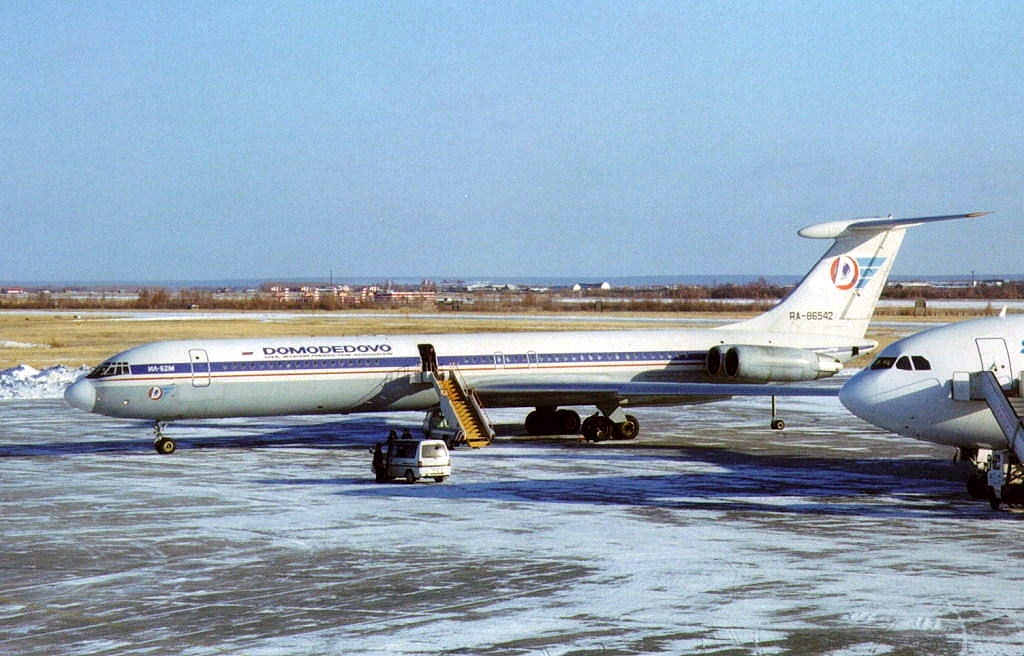
Domodedovo Airlines IL-62 at Yakutsk
The IL62 was the Soviet Union’s first long-range jet airliner, purported to be the largest jet airliner when it was first flown. Mainly used by airlines in the old soviet bloc, it is similar in layout to the Vickers VC10. It was developed to replace the ageing TU114 turboprop aircraft on Aeroflot routes to places like Montreal, New York, Tokyo and Cuba.
It first flew in 1963, and the upgraded Il62M arrived in 1971.
Boeing 727 – 1963
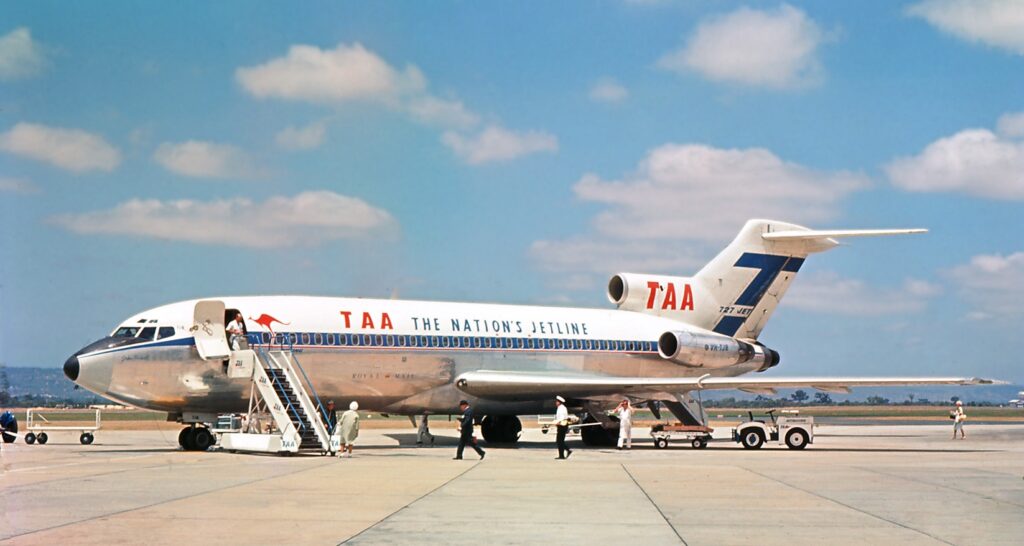
Once the world’s most produced jet airliner until its stable mate the 737 surpassed it, and the first to break the 1,000 sales barrier, the 727 was designed to service smaller airports with their often smaller runways. Boeing had only the 707/720 at that time, with manufacturers all over the world planning and producing aircraft in this smaller sector.
Although the aircraft retained the same cross section of the 707/720 fuselage, it had a number of firsts for Boeing. It was their first jetliner to undergo rigorous fatigue testing, the first to have completely powered flight controls, the first to use triple-slotted flaps and the first to have an auxiliary power unit (APU).
The original, smaller 727-100 first flew in February 1963, with the larger and more popular -200 model flying in 1967.
Tupolev Tu-134 – 1963
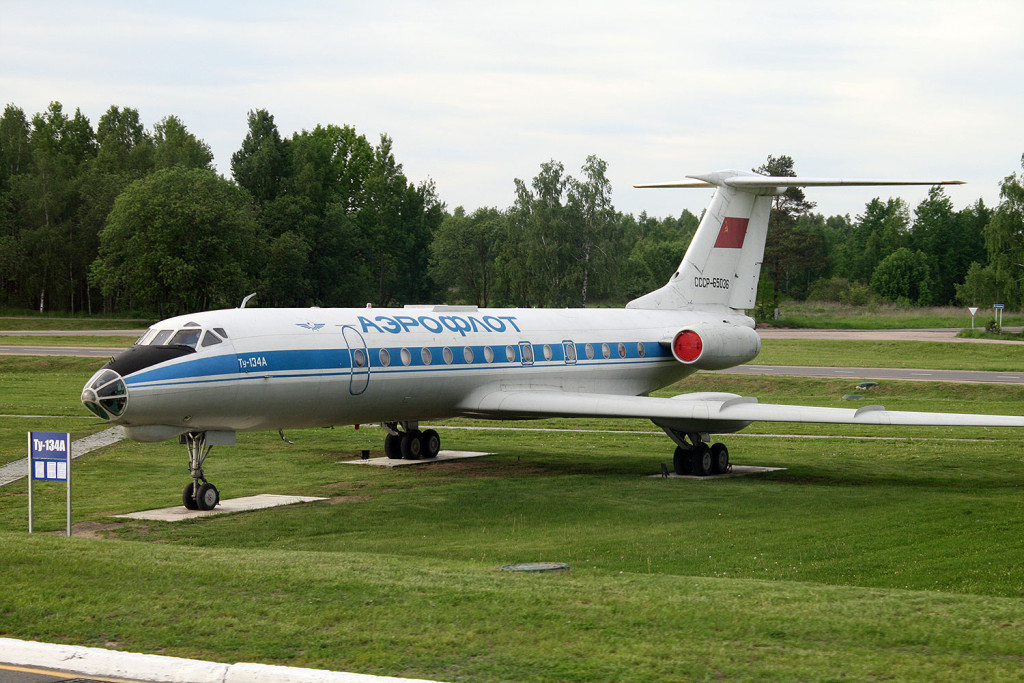
inThe easily recognisable Soviet airliner had initially started as an upgrade to the TU124, but once it emerged from the factory it had become an all-new design in the same style as similar-sized current western airliners the DC9 and BAC1-11, with all three having a T-tail and two rear-mounted engines. However, this is where, unlike other Soviet designs, the similarity ended. Its thin and angular style and swept back wings and tail planes gave it a unique look, particularly with the initial versions having a glass nose. The first TU134 took to the skies on 29 July, 1963, with Aeroflot taking the first delivery in September and putting the aircraft into service in the same month.
BAC 1-11 – 1963

BAC 1-11-401AK G-BBME of British Airways at Dusseldorf Airport (Peter Bakema, distributed under a GFDL 1.2 Licence)
The origins of the 1-11 go back as far as the 1950s when Vickers Armstrong and Hunting were working on separate design studies for a short-haul aircraft.
It evolved into this 80-seat jet airliner with rear-mounted engines and T-tail design, which first flew on 20 August 1963.
One of the more popular British airliners, the 1-11 enjoyed success around the world, including with carriers like American Airlines, Braniff and Mohawk in the USA.
Later in 1963 the upgraded -300 and -400 models arrived, with the largest and most popular 1-11-500 first flying in January 1967.
Douglas DC-9 – 1965
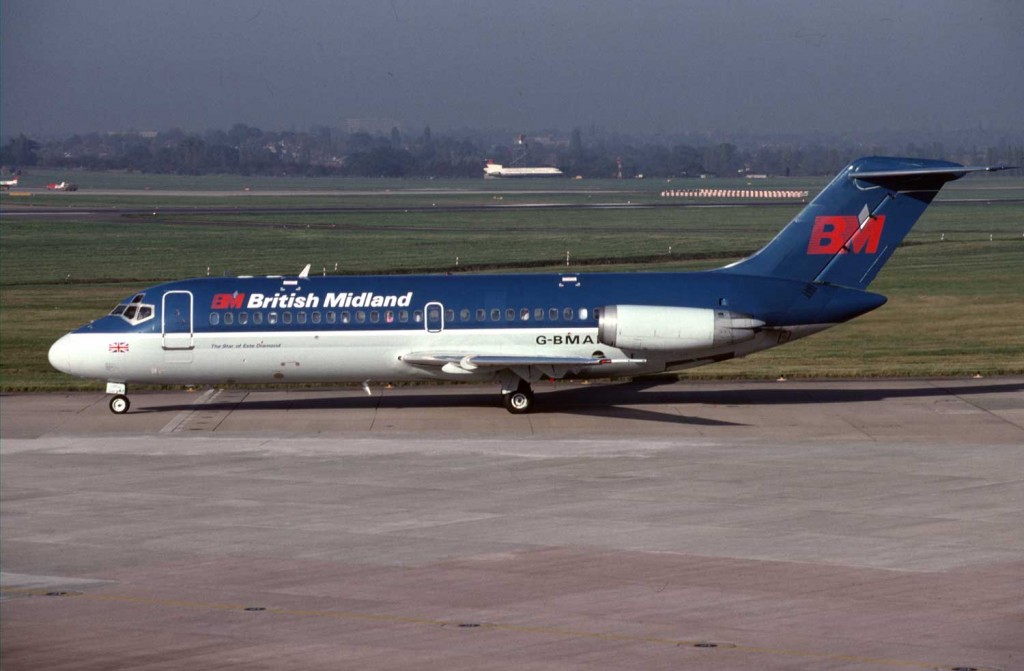
Needing to add a short to medium-range airliner to complement the DC-8, Douglas’s initial design for a smaller aircraft did not create enough interest from airlines and was cancelled in favour of a marketing agreement with Sud Aviation for its Caravelle. Similarly unsuccessful, Douglas went back to the drawing board in 1962 and came up with a T-tailed, twin rear-mounted engine aircraft with built in airstairs both at the front and in the tail aimed at short hops, often into airports with shorter runways and little infrastructure. Delta Airlines at this time was also looking for a replacement for its ageing CV440s. It was indeed Delta who was the launch customer for the aircraft with an order of 15 placed in April 1963. The first flight of the DC-9-10 was on 25 February, 1965.
Through the rest of the 1960s the DC-9-20, -30 and -40 arrived, each addressing different needs such as range or capacity. The DC-9-50 completed the set in 1974, and the McDonnell Douglas MD-80 series was launched later in the 1970s.
De Havilland Canada DHC-6 Twin Otter – 1965
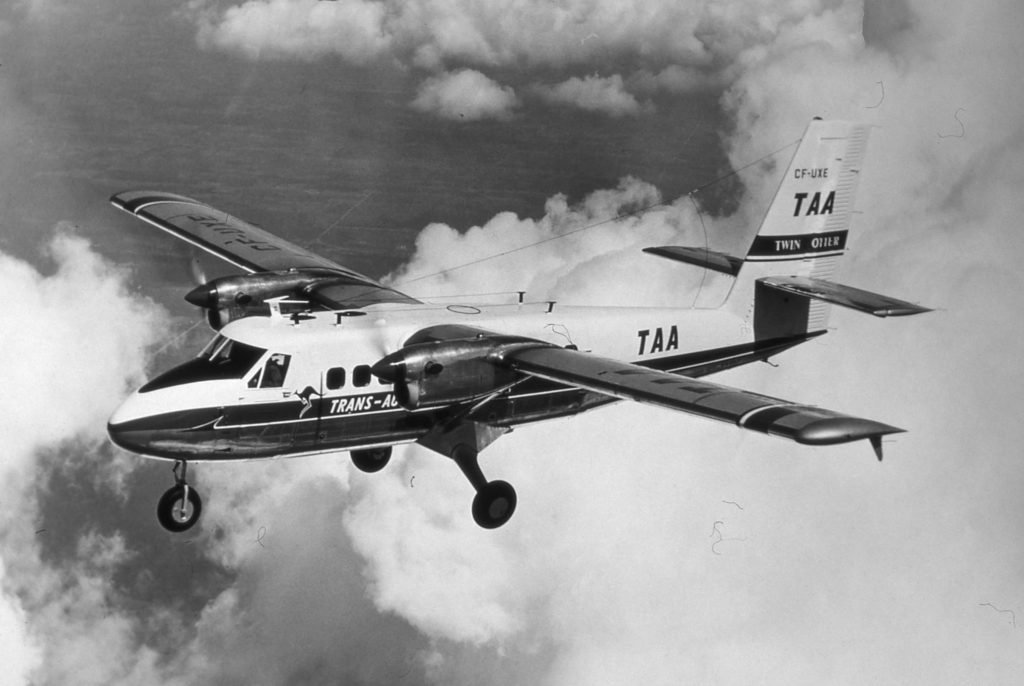
A replacement for the DHC-3 Otter, the DHC-6 Twin Otter retained the STOL capabilities of its predecessor and, despite being originally designed for the wild areas of the Canadian north, it went on to become one of the most successful post-war light transports, operated in over 80 countries.
Development began in 1964 and built on the success of the single-engined Otter by stretching the fuselage and using the same basic wing, albeit larger and with a tricycle undercarriage. The single-piston engine was replaced by two more reliable turboprops, hence the name Twin Otter.
The aircraft first flew on 20 May, 1965, with deliveries being made a mere three months later.
Britten Norman BN-2 Islander – 1965
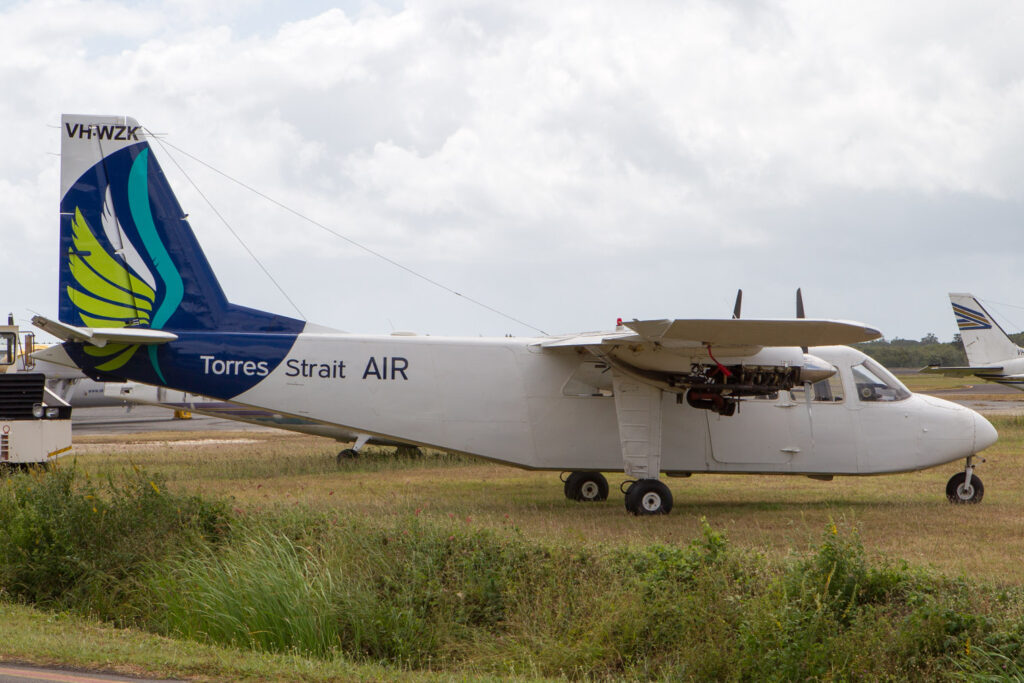
Torres Straight Air BN Islander
Initially designed to replace the de Havilland Dragon Rapide, it had STOL characteristics and was to serve as a simple multi-purpose utility aircraft. Work on the design began in 1963 and the prototype made its first flight on 13 June, 1965.
Before the first flight of the production prototype on 20 August, 1966, it had been re-engined and had a 1.22m wingspan increase. Over the years of construction both at Bembridge on the Isle of Wight and later by Romaero in Romania due to the Isle of Wight plant being unable to keep up with initial demand, the company has produced over 1,250 aircraft. Many of these are still in service today, with around 500 operators in 120 countries, serving with both civil and military operators in such roles as air taxi, light freight, crop spraying and commuter operators in the commercial field. It also carries out various jobs in the military and marine domains.
In fact, Britten Norman markets the aircraft as one that can be personalised to suit individual operator’s needs.
Boeing 737-100 & 200 – 1967
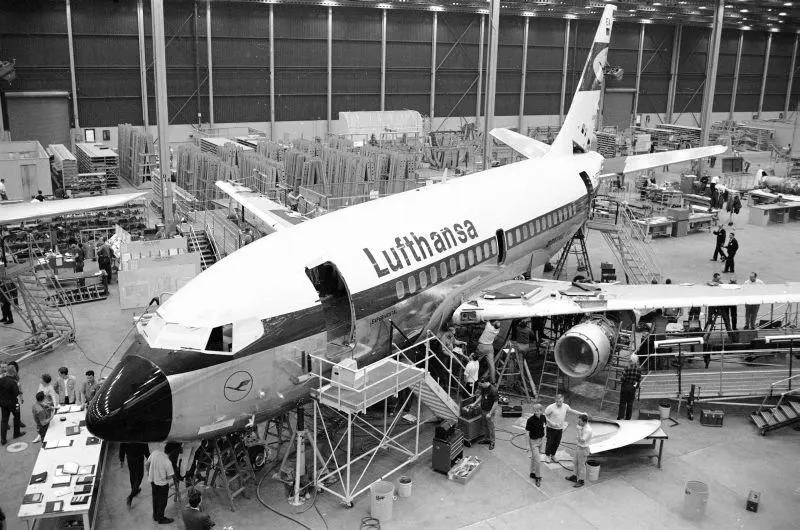
The remarkable destiny of the 737 was not apparent from the beginning as sales were slow, in part due to it coming to the market somewhat late. Design work on this short/medium-haul aircraft began on 11 May, 1964 and the very first flight of the prototype of what would become the best-selling jetliner of all time took place on 9 April, 1967.
Boeing were initially looking to produce a shorter and lower cost airliner to supplement their 727 on short and thin routes. At first, the look of the aircraft was similar to the 727 but with two engines and five abreast seating. In a move to lighten the structure, the engines were placed under the wing, which had the added advantage of enabling a wider fuselage and therefore changing the layout to six abreast seating.
Lufthansa became the first ever non-US airline to launch a Boeing aircraft with an order for 12, but this only came after assurances that the project would not be cancelled and that the aircraft would be able to have 100 seats. United placed an order for 40 aircraft in April of the same year, but its requirement was for a larger version, thereby leading to a stretched version which was designated the 737-200. This aircraft flew for the first time on 8 August, 1967.
To date, the Boeing 737 has become one of the all-time best selling airliners, crossing multiple ranges and variants right up to the present MAX series.
[Boeing 737-100 and -200 – The Book]
Fokker F28 – 1967
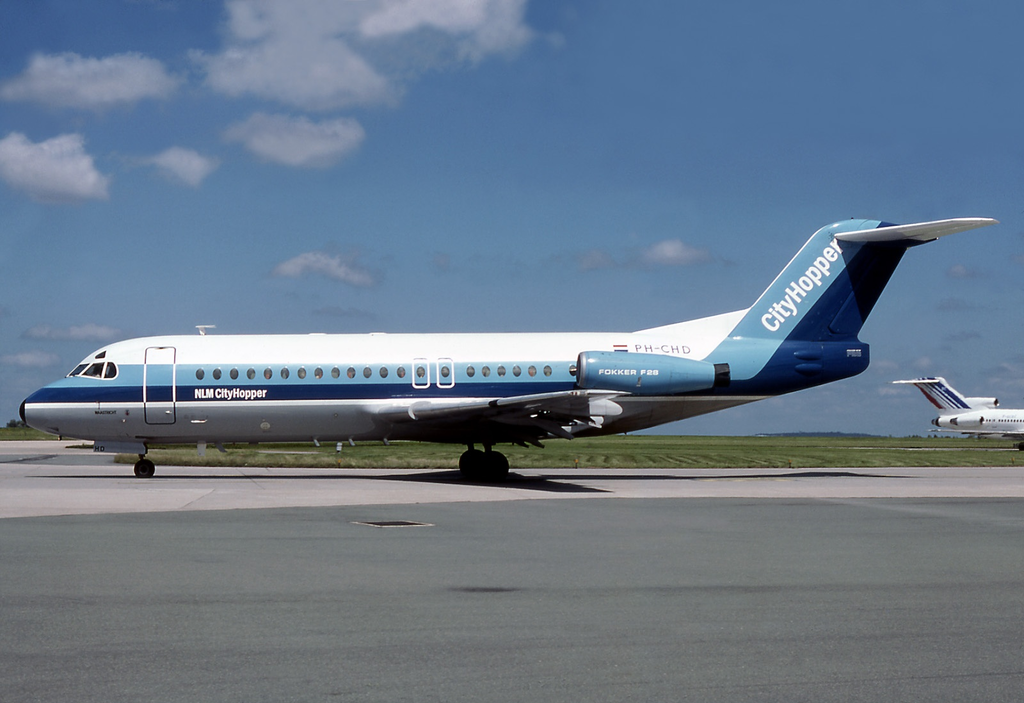
The F28 Fellowship was designed to complement the turboprop F27 and was announced by Fokker in 1962. It was to be in collaboration with MBB, Fokker-VFW and Shorts. It was initially expected to be a 50-seater and looked like both the BAC 1-11 and Douglas DC-9 with a T-tail and rear fuselage-mounted engines.
It had, by the time of the launch in 1965, increased to upwards of 65 seats. Components were transported to Amsterdam’s Schipol airport for final assembly and the prototype first took to Dutch skies on 9 May, 1967.
Boeing 747 – 1969
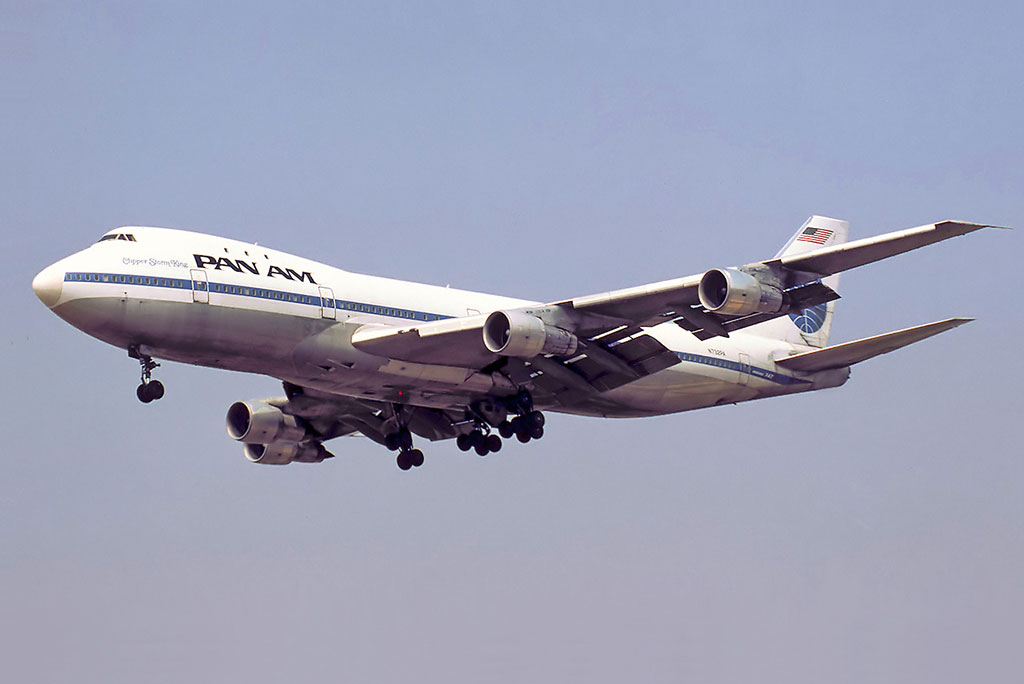
The iconic Boeing 747 was nothing short of revolutionary when it first came on the scene at the end of the 1960s. The combination of huge passenger numbers and more efficient high bypass engines brought air travel to a whole new market as airlines could now offer much cheaper fares than before.
Originating out of a bid for a large military transport aircraft (which was lost to Lockheed), Boeing developed the 747 into a passenger and freight airliner, launching with the backing of Pan American’s Juan Trippe who wanted greater capacity on key routes.
The 747 took to the skies on 9 February, 1969, and the order book at the time was at a healthy 160 from an equally healthy 27 airlines. Later variants developed through the 1970s, 80s and 2000s saw production continue until 2022.
BAC/Aerospatiale Concorde – 1969
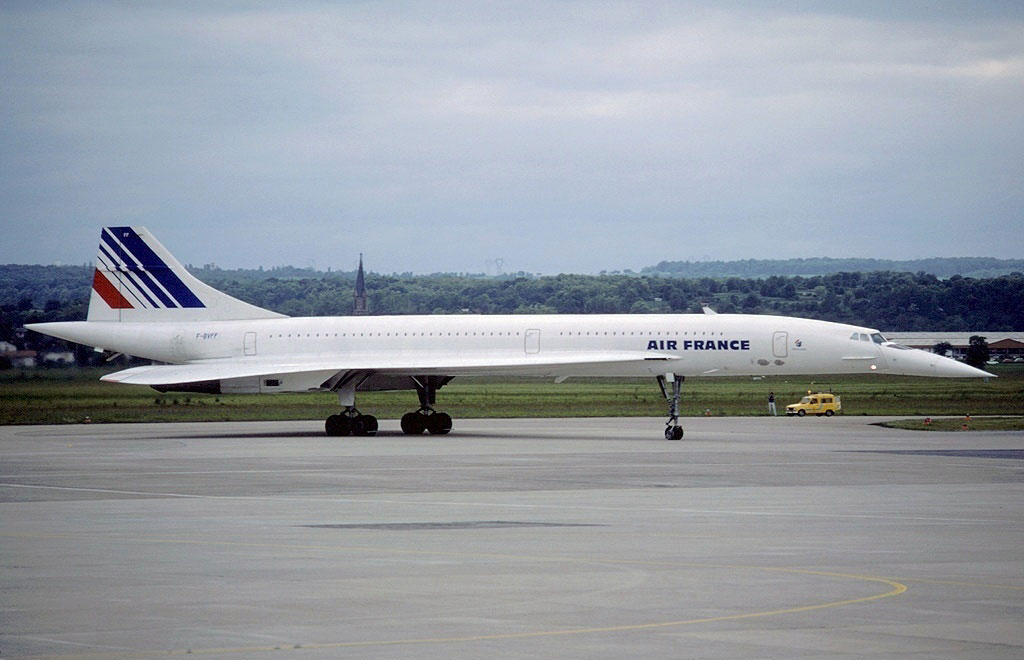
Concorde F-BVFF at Charles de Gaulle Airport, Paris, France. (Pedro Aragão, distributed under a Creative Commons CC BY-SA 3.0 Licence)
Possibly the best-known commercial airliner ever built, Concorde was an anglo-french built supersonic passenger airliner and the only one to ever really enter commercial service. An aviation work of art, this aircraft made supersonic travel routine, transporting passengers across the Atlantic so fast that arrival in New York was actually earlier than the departure time in Europe.
Following monumental hurdles which had to be overcome in terms of engineering, costs and regulatory approval, the joint French/British teams finally saw production complete and the first Concorde take to the skies on 2 March 1969.
It would not enter passenger service until the late 1970s, by which point airline confidence had been lost and orders cancelled.
But nevertheless, this true airliner of the 1960s was an incredible achievement and a good way to end this look at the decade which produced many classic jets.
 Flying Firsts
Flying Firsts
For more details of airliners produced across the decades, our reference book Flying Firsts is a must-have. A full-colour guide to all of the types and variants, it is packed full of facts, dates and histories of all the airliners produced since the 1940s.
Get your copy today


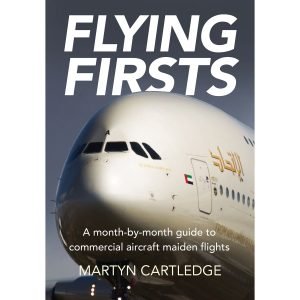



1 comment
Hi Matt, remember them all well and flew in them all except Concorde and the Russian ones.
A great era indeed, 1959/60 also the Comet4B ( 5 flights in them) and the Argosy (2flights) and the very reliable but poor selling Herald ( 4 flights in them). It was a great time to be involved in civil aviation, just wonderful.
I can still hear those RR Darts and Tynes now !